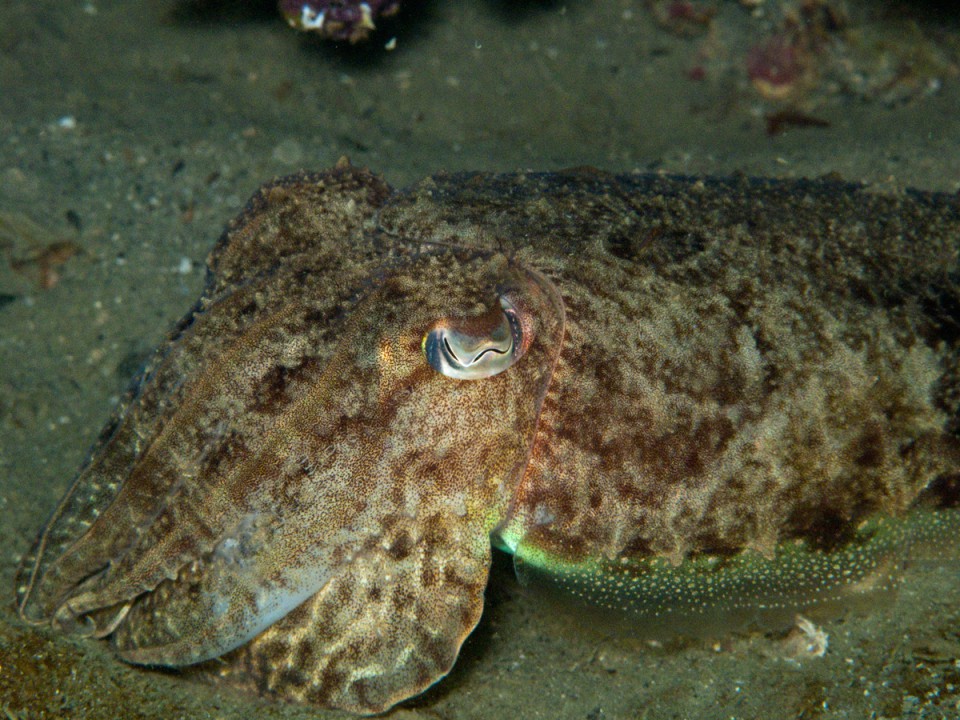Sepia officinalis
La seppia è un mollusco cefalopode carnivoro e predatore, può raggiungere una lunghezza di circa 40 cm, con il corpo di forma ovale appiattito nel senso dorso-ventrale. Come per il calamaro e il totano, anche nella seppia ai lati del mantello sono presenti due pinne; all’interno del corpo è presente una conchiglia calcificata: l’osso di seppia. Sempre all’interno del corpo la seppia nasconde una piccola sacca con il “nero di seppia”, un liquido che viene espulso in caso di minaccia, per confondere eventuali predatori e darsi alla fuga. Gli occhi sono grandi e sporgenti e la bocca è munita di becco. La bocca . circondata da 10 appendici, 2 delle quali sono assai più lunghe, prensili e retrattili, munite di ventose alle estremità quindi adatte a cacciare, mentre le altre 8 braccia hanno 4 serie di ventose e vengono usate per portare il cibo alla bocca. La seppia possiede una spiccata capacità mimetica e può modificare la sua livrea, in pochi istanti, a seconda del fondale su cui si posa. I maschi e le femmine vivono sui fondali costieri sabbiosi, melmosi e sulle praterie di fanerogame; compiono migrazioni riproduttive in primavera, quando si avvicinano alle coste per deporre le uova e poi in autunno, quando i nuovi nati si allontanano verso il largo. Le uova formano grappoli neri simili ad uva, chiamate “uva di mare”, che danno origine dopo un periodo più o meno lungo, a seconda della temperatura delle acque, a seppioline simili all’animale adulto, che dopo circa sei mesi raggiungono i 100 g di peso. La seppia è un animale dal ciclo vitale breve, raggiunge la maturità sessuale dopo pochi mesi e la sua vita media dura circa due anni. Taglia minima 7 cm.

